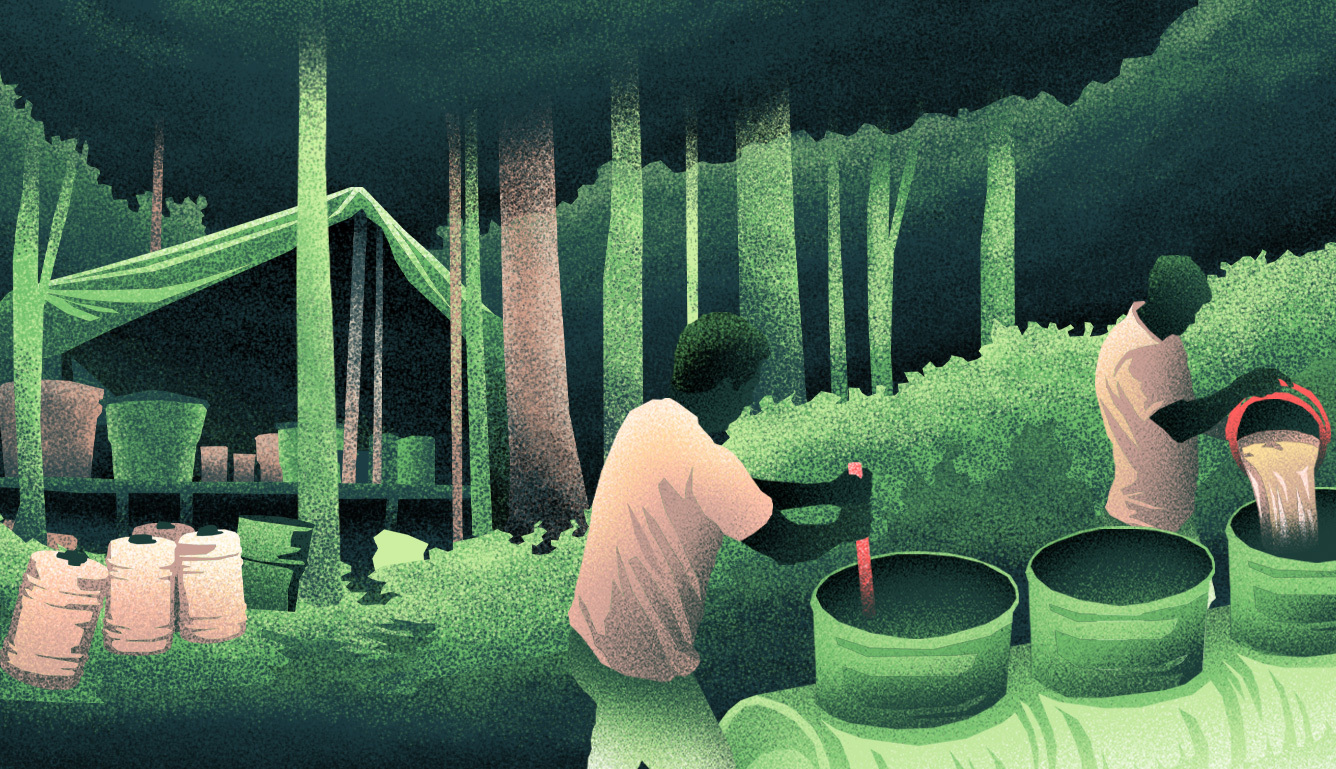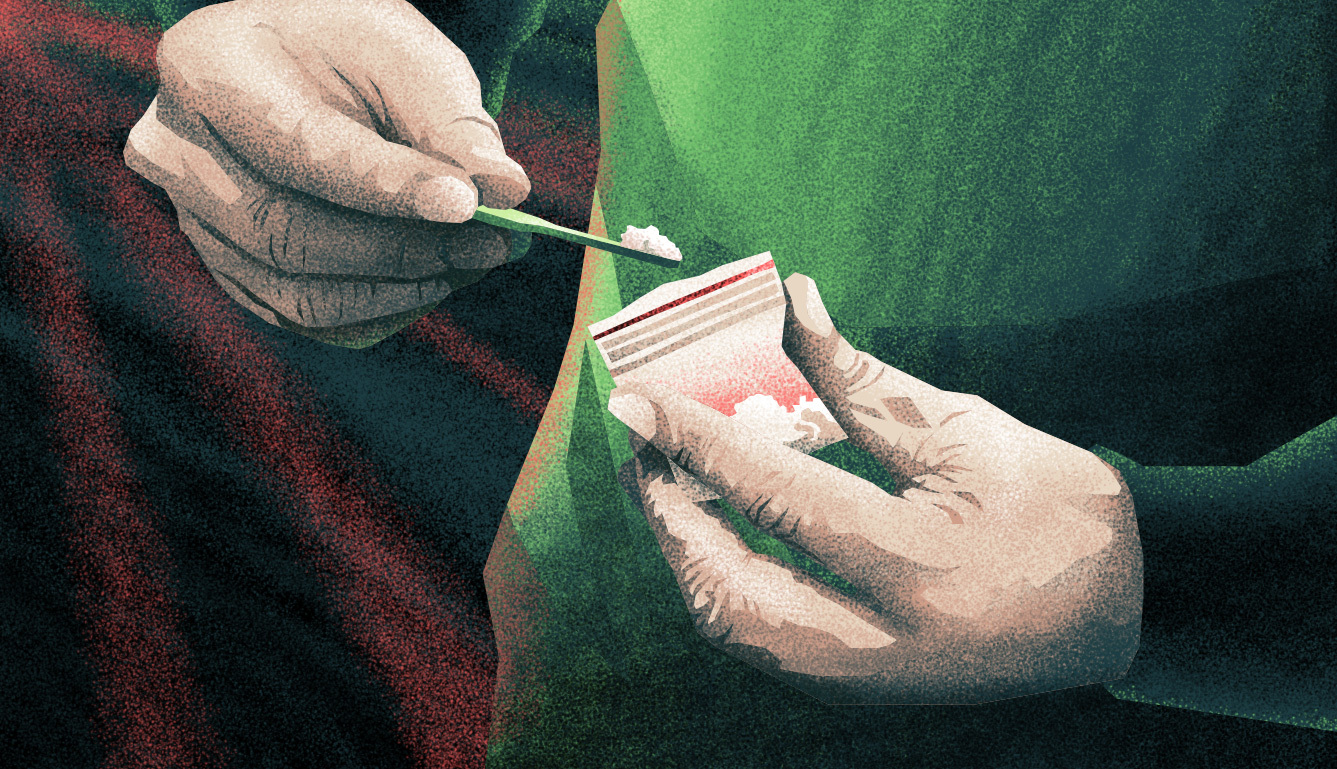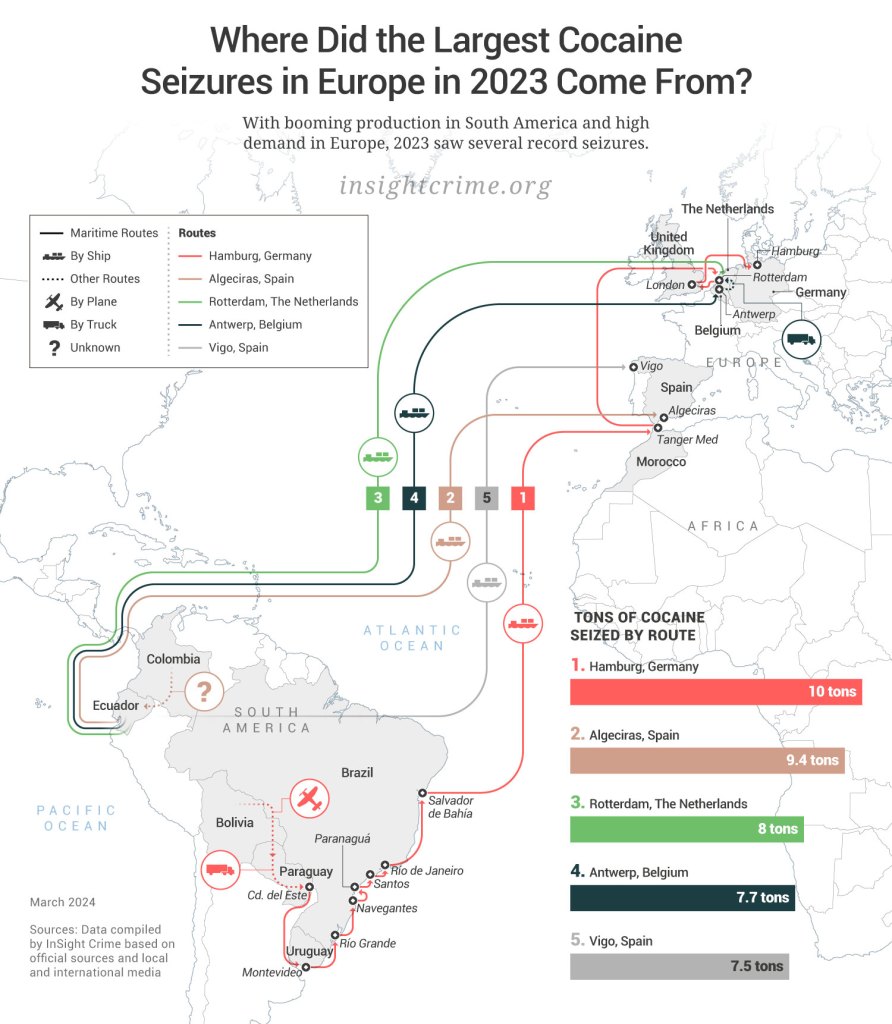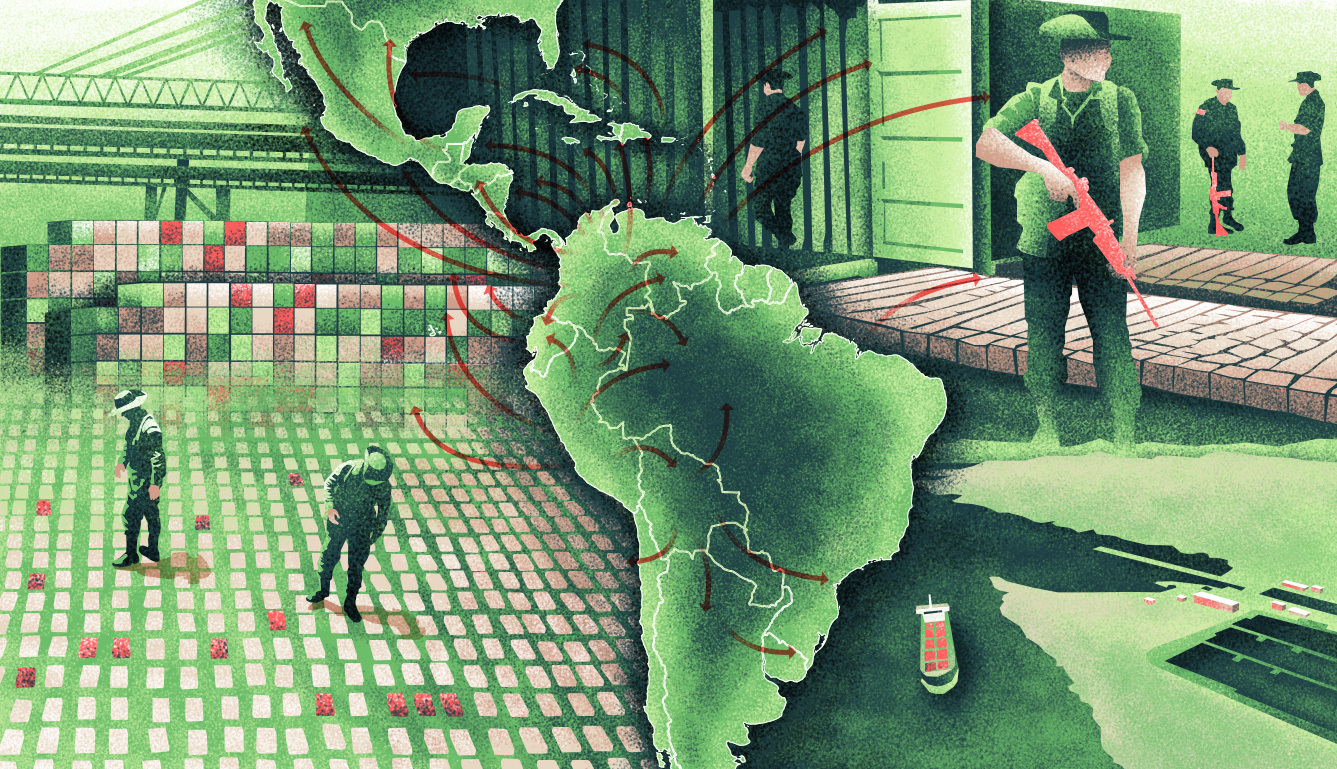
Record cocaine production and high demand for the drug contributed to criminal violence across Latin America and the Caribbean in 2023, as traffickers established new routes to bypass increasing interdiction efforts.
Two countries are indicative of how drug trafficking remains a major driver of violence in the region. Ecuador continues to seize historic amounts of cocaine and in 2023 had its most violent year on record as drug trafficking groups competed for strategic routes. Costa Rica was similarly impacted, with its homicide rate increasing by 41% year-on-year amid an ongoing struggle to control cocaine trafficking through its ports.
But some countries saw major increases in cocaine seizures while being spared violence. In places like Bolivia and Peru, where much of the world’s coca leaf is grown, authorities seized more cocaine last year than in 2022, while homicides stayed low. Nonetheless, the seizures for both those production nations combined were less than Ecuador, raising questions about their capacity and commitment.
And in the Caribbean, home to many of the region’s most violent nations, increased interdiction efforts in traditional cocaine hubs like the Dominican Republic have driven drug trafficking organizations (DTOs) to shift to different transit points for their cocaine consignments.
SEE ALSO: InSight Crime’s 2023 Homicide Round-Up
Below, InSight Crime analyzes cocaine seizures in those countries that had prominent roles in the drug trade or whose role significantly changed during 2023.

Production Countries
Colombia and Bolivia, two of the world’s three main producers of coca, reported record seizures of cocaine in 2023. While Peru seized slightly less cocaine than in 2022, authorities confiscated 53% more coca base in 2023. Meanwhile, coca cultivation on a smaller scale has continued to take root in Venezuela, Guatemala, and Honduras.
Cocaine seizures increased in the three major production countries from 2022 to 2023
Metric tons seized
Sources: Various open and official sources compiled by InSight Crime
Colombia
In Colombia, the world’s perennial top cocaine producer, authorities seized 739.5 tons of cocaine, 450 tons of which were confiscated in international territories, according to the Defense Ministry. This is a 12.1% increase over the 659 tons seized in 2022.
The increase in cocaine seizures is a result of the government prioritizing interdiction as production continues to rise. This is part of the government’s broader drug policy, which aims to shift the focus away from coca growers and cocaine consumers while boosting the government’s ability to seize drug shipments and capture key members of drug trafficking rings.
Listen to our podcast episode Daughter of Coca where we delve into the life of Ana, a social leader in Putumayo, Colombia, to explore one of the many faces of the cocaine trade.
Throughout Colombia, large coca leaf harvests created a substantial increase in supply. This, combined with the multitude of trafficking routes moving the drug out of the country and the uncertainty driven by continued fighting in Colombia’s cultivation zones, caused coca prices to collapse.
Peru
Peru, the world’s second-most important producer, seized 4.4% less cocaine, but 53% more coca base in 2023 compared to the previous year. Coca production has expanded beyond traditional hubs, such as the Valley of the Apurímac, Ene, and Mantaro Rivers (Valle de los Ríos Apurímac, Ene y Mantaro – VRAEM) into Indigenous lands and the border departments of Loreto, Ucayali, and Bruno. Moving beyond the rough terrain of the VRAEM to areas along the Brazilian and Bolivian borders allows easier transport to consumer markets, principally through the Brazilian routes.
Bolivia
Bolivia saw a dramatic 62% increase in cocaine seizures from 2022 to 2023. The country seized 33 tons of cocaine in 2023, compared to 20.3 in 2022, according to data from Bolivia’s anti-narcotics police (Fuerza Especial de Lucha Contra el Narcotráfico – FELCN).
SEE ALSO: Bolivia Family Clans Key Cocaine Suppliers to Brazil, Colombia
The government increased its focus on seizures as part of its 2021-2025 security plan, aiming to conduct 10,000 operations in 2023. The plan also focused on eradicating coca crops outside permitted growing areas and more inspections for companies that deal in precursor chemicals. Authorities eradicated 10,302 hectares of coca in 2023, a slight increase over last year’s figure of 10,260.
Venezuela
Venezuela seized 43.7 tons of cocaine in 2023, an increase of 34% compared to the seven-year low of 32.6 tons seized in 2022. However, Venezuelan government figures have been opaque and unreliable in the past.
The state of Zulia accounted for 62% of cocaine seizures in 2023, equivalent to more than all the cocaine seized in 2022. Zulia lies across the border from Colombia’s Catatumbo region, the largest coca cultivation center in Colombia.
Increasingly sophisticated laboratories are being found more frequently, especially in Zulia, as Colombian guerrilla groups seek to evade the operations of Colombian security forces.
Honduras
Honduras saw a dramatic 93% drop in cocaine seizures from 2022 to 2023. The country confiscated only 470 kilograms in 2023 compared to 7.1 tons the previous year, according to data from the National Police. While these figures suggest that the country is losing predominance as a transit point, the government’s efforts to eradicate coca crops indicate coca cultivation has taken root in the country. In 2023, Honduran authorities eradicated 4.7 million coca bushes, down from 2022’s record 6.5 million, but still massively higher than 2021’s half a million plants.
Guatemala
Guatemala seized 5 tons of cocaine in 2023, compared to 5.9 the previous year. This 14.6% decrease in cocaine seizures suggests a shift in routes from Central America to Caribbean nations, like Jamaica. Cultivation of coca crops seems to be an emerging trend in Guatemala, as authorities nearly doubled the amount of coca plants destroyed, reaching 7.9 million, compared to around 4 million in 2022.
While the eradication of millions of plants in Central American countries is striking, coca cultivation in Honduras and Guatemala remains incipient, and pales in comparison to the major growers in the Andes. Moreover, conversion of the coca leaf into cocaine is low or non-existent, suggesting that these nations are still far from matching the rate of alkaloid production in Colombia, Peru, and Bolivia.

Transit Zones
Ecuador’s authorities seized more cocaine in 2023 than the combined total seizures of Peru and Bolivia, the second- and third-biggest production countries. The figures illustrate the country’s importance as a transit point in the international cocaine trade, which has fueled criminal competition and record-breaking violence.
Brazil remains the most important transit point on South America’s Atlantic coast, seizing more cocaine than Argentina, Guyana, Suriname, Uruguay, and Venezuela combined. Cocaine seizures decreased in Paraguay and Uruguay, suggesting weak anti-trafficking controls. Multiple loads that passed seemingly undetected through those countries were later seized in reception points in Europe.
Panama and Costa Rica, traditional transit points in the cocaine pipeline to the United States, witnessed a decrease in cocaine seizures. However, exceptionally large seizures in Caribbean territories like Jamaica may suggest a shift in routes.
Ecuador
Ecuador seized nearly 200 tons of cocaine in 2023, second only to Colombia. Located between Peru and Colombia, two of the world’s main cocaine producers, Ecuador has become an important exit point from South America. The increase in production in neighboring countries, and the profits derived from this market, was associated with a notable increase in homicides in Ecuador. The murder rate went from 6 per 100,000 inhabitants in 2016 to 44.5 per 100,000 in 2023.
As authorities seize more cocaine flowing through Ecuador, homicides have similarly increased
Metric tons of cocaine seized and the homicide rate per 100,000 people, 2016–2023
Sources: UNODC, National Police of Ecuador, data compiled by InSight Crime
The city of Durán, in the southwest of the country, has become one of the main storage points for cocaine. Its proximity to the major port of Guayaquil makes it attractive to drug traffickers, who contaminate shipments traveling to and from port terminals along the Guayas River with drugs.
Panama
Panama confiscated 95.67 tons of cocaine in 2023. While this figure is 12% lower than in 2022, the Central American nation still seized more cocaine than any country besides Colombia and Ecuador. The drop in traffic through the Panama Canal due to a lack of rainfall is one of the factors causing the decrease in seizures. The operational capacity of the strait that connects the Atlantic and Pacific oceans went from 38 vessels daily under optimal conditions, to 32 in July, 31 in November, and 24 in January.
Nevertheless, Panama remains a primary hub for drug trafficking in Latin America, especially for shipments headed to Europe.
Brazil
Brazilian authorities seized a total of 72.3 tons of cocaine in 2023, according to Federal Police data obtained by InSight Crime. Though much lower than the 96.6 tons reported in 2022, last year’s data included crack cocaine and coca base.
Almost a quarter of the total – nearly 17 tons – were seized in São Paulo, the biggest state in the Americas and home to Brazil’s principal cocaine exit point, the port of Santos. The state is also the home territory of one of the world’s foremost cocaine trafficking groups, the First Capital Command (Primeiro Comando da Capital – PCC).
SEE ALSO: How Brazil’s Port of Santos Became Cocaine’s World Trade Center
Brazilian authorities made key busts throughout other parts of the country. In September 2023, Brazil’s navy apprehended 3.6 tons of cocaine off the coast of the Northeastern state of Pernambuco – the largest maritime seizure in Brazil’s history.
Brazil’s borders with Bolivia and Paraguay remain focal points for seizures. After São Paulo, the states with the most seizures were the border states Mato Grosso (14.3 tons), Paraná (8.3 tons), and Mato Grosso do Sul (7.7 tons).
Costa Rica
Costa Rican authorities seized 21.4 tons of cocaine in 2023. Although this figure is 13.4% lower than in 2022, drug trafficking consolidated its position as one of the main drivers of violence, accounting for the majority of homicides in 2023. In addition, crack consumption increased by 15.2% compared to 2022, according to figures presented by the National Statistical Information Unit on Drugs (Unidad de Información Estadística Nacional Sobre Drogas). This suggests that some of the cocaine passing through Costa Rica is destined for the local market.
SEE ALSO: Costa Rica Breaks Homicide Record Amid Security Coordination Struggles
Dominican Republic
Authorities in the Dominican Republic seized 17.98 tons of cocaine in 2023, compared to 27 in 2022, 19 in 2021, and 10 in 2020. Corruption in the ports, coupled with its strategic location between South American producer nations, the ever-lucrative United States, and the increasingly popular European markets, made the country the Caribbean’s cocaine hub in 2022.
However, increased interdiction efforts supported by the US Drug Enforcement Administration (DEA) in 2022 likely caused traffickers to change routes.
Jamaica
InSight Crime was unable to obtain open data on cocaine seizures in Jamaica, and the government did not respond to requests for official statistics. However, the country saw significant changes in cocaine trafficking in 2023. The island began the year with a seizure of more than 1.5 tons of cocaine hidden in the container of a ship in the port of Kingston. The seizure, which was one of the largest in the country’s history, set off alarm bells, as it was the third seizure of more than over 500 kilograms in just a four-month period.
“These are not ordinary [seizures]. They are exceptionally large,” Anthony Clayton, a security expert and professor at Jamaica’s University of the West Indies, told InSight Crime.
Increases in coca cultivation, the resulting growth of cocaine from Colombia, and the decrease in cocaine flow through Central America are some of the factors causing the rise of Jamaica’s potential as a cocaine transit point.
Paraguay
Authorities in Paraguay seized 610 kilograms of cocaine in 2023, down from just over 3 tons in 2022, according to data from Paraguay’s National Anti-Drugs Secretariat (Secretaría Nacional Antidrogas – SENAD) obtained by InSight Crime.
Paraguay has a relatively small domestic market for cocaine, instead serving as a launchpad to international ports in Argentina, Brazil, and Uruguay. Traffickers use the Bolivia-Paraguay border to get cocaine into Paraguay via small planes and clandestine runways, before moving it across Paraguay’s southern and eastern borders into Argentina and Brazil.
SEE ALSO: Paraguay Shown as Key Link in Bolivia-Europe Cocaine Route
But the decrease in seizures in Paraguay is not likely due to a decrease in cocaine trafficking. Across the border, in the Brazilian state of Paraná, the PRF police seized 2.7 tons of powder cocaine – 44% more than in 2022. This suggests that Paraguay continues to be an important transit country, but authorities are not capturing much of the drug before it leaves Paraguay.
The largest seizure outside of South America in 2023, 10 tons interdicted in Hamburg, Germany, passed through Paraguay’s scanners but was not searched, despite the scanners detecting an anomaly. The ship then passed through Uruguay’s capital, Montevideo, and several Brazilian ports on its way to Europe.
Southern Cone
The rest of the Southern Cone countries – Argentina, Chile, and Uruguay – all solidified their status as vital transit zones in 2023, while failing to seize much of the cocaine crossing their borders.
In Argentina, authorities seized 7.3 tons of powder cocaine and coca base in 2023, according to government data obtained by InSight Crime. Data for 2022 was unavailable. Several shipments with hundreds of kilograms of cocaine passed through Argentina’s ports in 2023, only to be seized by authorities in Australia.
Authorities in Uruguay seized 3.3 tons in 2023, according to data from the Interior Ministry obtained by InSight Crime. This is down almost 28% from the 4.5 tons reported in 2022.
Major shipments of cocaine moving through Uruguay raised concern throughout the year. The 10-ton shipment that was seized in Hamburg, Germany, was just one of several multi-ton shipments that passed through Uruguay’s ports in 2023. The government announced in March 2023 that it would buy three new scanners in an attempt to increase their ability to detect drug shipments passing through the country.
On the continent’s Pacific coast, Chile’s international ports and borders with Peru and Bolivia, the second- and third-biggest producers of coca, make it convenient territory for international cocaine trafficking groups. Numerous seizures in Rotterdam, the Netherlands – including a 1.7 ton shipment – passed through Chile on their way to Europe in 2023.
Suriname
South America’s smallest country, Suriname, has consolidated its role as a transit point in the cocaine pipeline to Europe. While the government installed scanners in the main port in May 2022, they were not operational until November 2023, a senior customs official told InSight Crime. The country’s lack of capacity is reflected in the small quantity of cocaine seized last year, which reached only 125 kilograms, according to data provided to InSight Crime by Customs Suriname.
SEE ALSO: Suriname VP, Ex-President Linked to Drug Trafficking in Colombia AG Emails
Africa
Nations in southern and eastern Africa are growing as both consumption countries and transit points for shipments to Europe and Australia.
The South America-to-Africa-cocaine-pipeline flows primarily out of the port of Santos in São Paulo, Brazil, where the PCC controls the drug trade. From there it travels to South Africa, Kenya, Tanzania, or Mozambique, where the PCC has been active since at least 2020. It then moves inland or continues the sea voyage to other continents.
North Africa also continues to be an active corridor. Its proximity to Europe makes ports like Tanger-Med in Morocco convenient stopping points, despite increased patrols by the French navy.
In West Africa, Nigeria serves as the primary cocaine hub. The primary method of smuggling is human couriers departing São Paulo’s Guarulhos International Airport. After landing, a network of small groups moves the drugs to consumer markets in Europe, Asia, and other parts of Africa.
Increased trafficking to Africa may be a response to changes in market conditions and new strategies by authorities. With the supply of cocaine continuing to rise, transnational criminal groups are likely searching for new markets. And a large selection of routes gives traffickers increased resilience should authorities crack down on a major pipeline.

Consumption Centers
Seizures remained high in major drug markets, like Europe and the United States, as well as in newer markets in Asia and Oceania.
Europe
Increased seizures at Europe’s traditional entry points in Belgium, the Netherlands, and Spain, indicated their continued popularity among traffickers. Meanwhile, increased production of the drug and continued demand caused drug traffickers to seek alternate routes in 2023.
In this context, other countries have emerged as alternate points of entry for cocaine into Europe. At the end of March 2023, police in Norway seized the largest cocaine shipment in its history – 800 kilograms. Less than a month later, in Russia, authorities seized 699 kilograms of cocaine destined for other European countries. In June, something similar happened in Sweden, where customs seized 460 kilograms of cocaine from Ecuador. Once again, the cocaine was destined for other European countries.
SEE ALSO: Europe: Cocaine’s Ever-Expanding Market

While it is difficult to precisely measure consumption, wastewater analysis indicates Europeans in many cities are using more and more cocaine.
Antwerp detected the most consumption by far, with cities in Spain, the Netherlands, and Switzerland rounding out the top five. Most of the cities that participated in the past two years saw an increase in cocaine detected in their wastewater.
United States
While fentanyl garnered much of the authorities’ attention in the United States last year, cocaine seizures rose 15.4% from 31.9 tons in 2022 to 36.8 in 2023.
The United States is one of the most lucrative drug markets in the world, with the most recent estimate finding that 5.3 million people in the United States used cocaine at least once during the past year.
The US has spent decades trying to combat the influx of cocaine across its borders. But some of these efforts have been undercut by corruption in partner countries, as several cases in 2023 demonstrate.
On February 21, 2023, Genaro García Luna was convicted on cocaine trafficking charges in a US court. García Luna accepted millions in bribes from the Sinaloa Cartel to secure the passage of cocaine into the United States while serving as Mexico’s public security minister.
A few months later, on May 29, a former Guatemalan colonel, Otto Fernando Godoy Cordón, pled guilty to helping the CJNG traffic cocaine to the United States.
Asia and Australia
The flow of cocaine and the demand for the drug have also increased in other regions of the world. In Hong Kong, the East Asian drug hub, for example, there was an 80% spike in drug seizures at the Hong Kong International Airport during the first six months of 2023 compared to the same period of the previous year. Although airports are typically associated with the movement of smaller drug quantities, authorities confiscated an equivalent amount of drugs at sea cargo terminals, which usually handle larger shipments, during the first nine months of 2022.
In Australia, the federal police seized 2.4 tons of cocaine en route to the country, setting a new national record in March 2023. Moreover, cocaine consumption increased to the highest level since December 2020, according to a report by the Australian Criminal Intelligence Commission.
The Sinaloa Cartel, Mexico’s foremost criminal organization, seems to have capitalized on the increasing demand. Australian authorities have consistently identified the group as a significant provider of cocaine and methamphetamine since at least 2011. Leveraging connections in Peru and Ecuador for securing cocaine shipments, the Sinaloa Cartel has forged alliances with gangs based in Australia to facilitate the local distribution of these drugs.
Sources and Methodology
As part of our daily monitoring, InSight Crime looks for reports of any cocaine seizures above 50 kilograms. We examine each report and try to find the route the cocaine took, methods used to traffic the drug, and where it originally came from.
Furthermore, we filed public information requests to every country in Latin America and the Caribbean asking for total seizures of cocaine in 2023 disaggregated by province and municipality (or the country’s equivalent) and type of cocaine (coca base, hydrochloride, etc.).
Drug seizure data has several limitations. Different countries have different ways of measuring and reporting their data, which may make it difficult to compare one country to another. Some countries do not distinguish between cocaine powder and cocaine base in their data, and the purity of any shipment is almost always unknown. Seizures, of course, only account for the drugs discovered by authorities. Thus, we do not know what new routes or techniques may be occurring that have so far evaded detection.You can request access to the complete dataset by email.
Our map relied on several sources to detail the routes as best we could. The route to Hamburg was reported by El Agora. The route to Algeciras comes from the Spanish Ministry of the Interior and EFE. Reuters and AP covered the route to Rotterdam. The Antwerp seizure was described by Nos and Listin Diario, while the route to Vigo comes from Spain’s National Police, Faro de Vigo, and El País.
We attributed the 7.7 tons seizure to authorities in Antwerp, even though the actual seizure took place in Bleiswijk, the Netherlands. This is because authorities detected the cocaine in Antwerp and decided to track the shipment to see where it went, eventually stopping it in Bleiswijk.
Whenever we use the unit tons, we are referring to metric tons (1,000 kilograms), not US tons (907.2 kilograms).
For the Ecuador graphs, data on cocaine seizures 2016-2021 comes from the United Nations Office on Drugs and Crime. Data for 2022 and 2023 are figures from Ecuador’s National Police. We compiled the data on homicide rates from our yearly Homicide Round-Ups.

